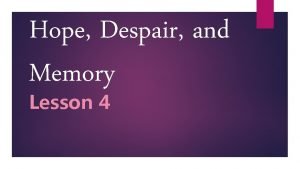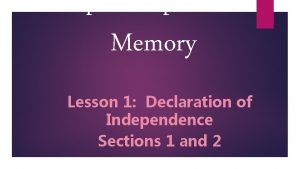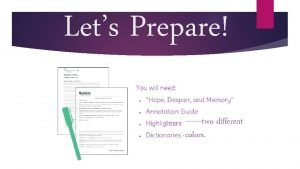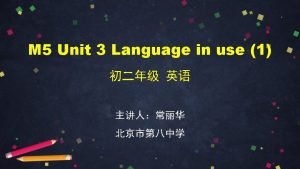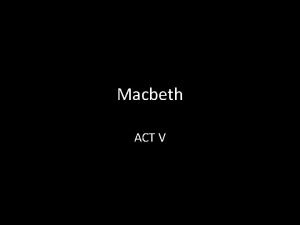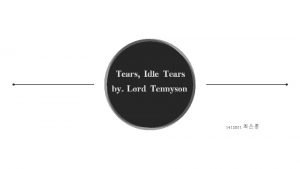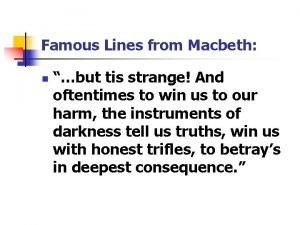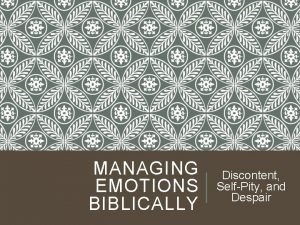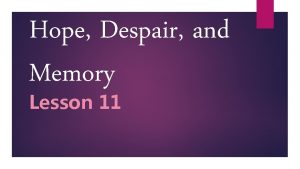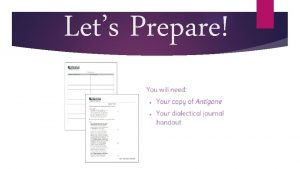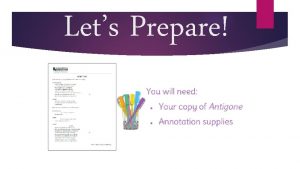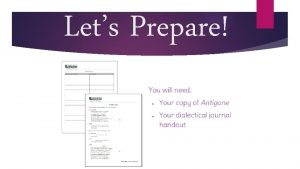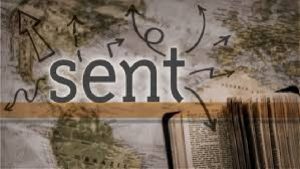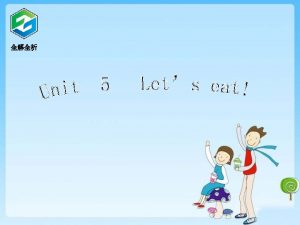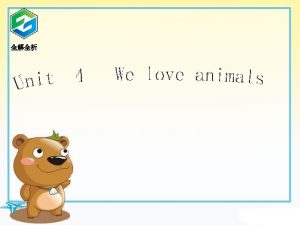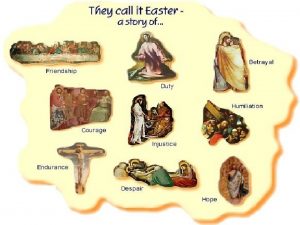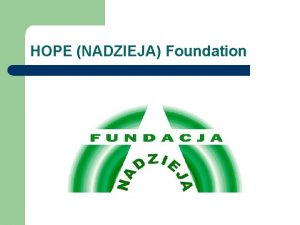Hope Despair and Memory Lesson 4 Lets Review
























- Slides: 24

Hope, Despair, and Memory Lesson 4

Let’s Review!

Let’s Prepare!

Let’s Prepare! -------two different -------BYOT colors. is allowed.

Today’s Outcomes • TSWBAT use annotating skills, specifically for words and phrases that convey an idea, to further comprehension. • TSWBAT discuss how an author develops a claim.

m y n o s e n t Sy minup 3 Swa Let’s Discuss! Step 1: Put a box around unknown words.

t h g i l h s g e i t H minu 2 Let’s Discuss! Step 2: Highlight any CLAIMS Wiesel makes in his passage.

s n r e t s t e a t P inu 3 m Let’s Discuss! Step 3: Determine the meanings of words and phrases with FIGURATIVE or CONNOTATIVE meanings. What patterns emerge? Highlight the patterns, and note the effects of these

l a c i r tes o t e Rh mineuals 3 App Let’s Discuss! Step 4: Label Wiesel’s development of ethical, logical, or emotional claims (ethos, pathos, logos).

y r a m s m e t u S minu 5 Let’s Discuss! Step 5: Write a brief OBJECTIVE SUMMARY of the passage in the space provided on your handout.

n o i s s u c s i D 5 -6 Let’s s e t u n i m Express Our Understanding! group member’s names group response

Let’s Close! Help! I got this!

Hope, Despair, and Memory Lesson 5

Let’s Review!

Let’s Prepare!

Let’s Prepare!

Today’s Outcomes • TSWBAT read, comprehend, and evaluate a novel to increase the volume, fluency, and proficiency of various reading skills.

g n i d s a e e t R minud 5 Alou Let’s Read! We’re going to discuss how the connotative diction, imagery, and figurative languagee in this paragraph help the author convey a specific tone. So as I read, add to your annotations

d n a n s r e t u T minuk 3 Tal Let’s Discuss! You have 3 MINUTES to discuss this question with your shoulder partner. Guiding Questions: • What are some words we annotated as examples of strong connotative diction in this paragraph?

d n a n s r e t u T minuk 3 Tal Let’s Discuss! You have 3 MINUTES to discuss this question with your shoulder partner. Guiding Questions: • What are some examples of imagery present in this paragraph?

d n a n s r e t u T minuk 5 Tal Let’s Discuss! You have 5 MINUTES to discuss this question with your shoulder partner. • • Guiding Questions: Is the diction in the first 13 paragraphs positive or negative? Looking at the diction, what tone would you say the author is creating? What is the central idea of the speech? How does the tone of the first 13

d n a n s r e t u T minuk 5 Tal Let’s Discuss! You have 5 MINUTES to discuss this question with your shoulder partner. Guiding Questions: • What is Wiesel trying to achieve by writing this speech? • How does he use figurative language, connotative diction,

s m i s a e l t C minu Let’s t r 0 a 1 Ch Express Our Understanding!

Let’s Close! Help! I got this!
 Hope despair and memory summary
Hope despair and memory summary Who wrote hope despair and memory
Who wrote hope despair and memory Color of despair
Color of despair Despair
Despair Let's review cartoon
Let's review cartoon Integer
Integer Let's have a review
Let's have a review Lesson 4 gravity and motion lesson review
Lesson 4 gravity and motion lesson review Identity vs inferiority
Identity vs inferiority Despair thy charm and let the angel
Despair thy charm and let the angel Internal memory and external memory
Internal memory and external memory Primary memory and secondary memory
Primary memory and secondary memory Page fault
Page fault Despair vs integrity
Despair vs integrity Skinner theory of child development
Skinner theory of child development 심연/despair scan
심연/despair scan Pit of despair meaning
Pit of despair meaning Famous lines of macbeth
Famous lines of macbeth Anger despair acceptance
Anger despair acceptance Trust vs. mistrust
Trust vs. mistrust Despair definition bible
Despair definition bible Semantic prototype
Semantic prototype Implicit memory
Implicit memory Long term memory vs short term memory
Long term memory vs short term memory Logical versus physical address space
Logical versus physical address space
